Dr Vino's wine blog
wine talk that goes down easy
Bottles as bricks, jugs, sprawl, Holy wine – sipped and spit
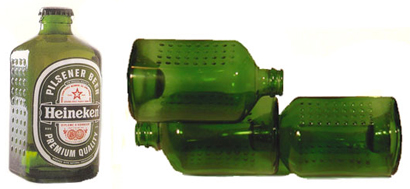
SIPPED: reusing wine bottles
We like reusing corks. And we previously saw the 13,500 bottle wall house previously. And recently another bottle wall surfaced on reddit (though it may not be wine bottles). If this trend keeps up, a winery may soon make the equivalent of Heineken’s WOBO bottle, a brick masquerading as a bottle!
SIPPED: jugs
Dottie Gaiter and John Brecher recommend jug wines. But little jugs, really, just magnums. No Carlo Rossi. [WSJ]
SIPPED: viticultural sprawl
On Friday, the federal authorities that regulate wine gave the thumbs up to a new American Viticultural Area. And true to our rule, that the bigger they are, the more useless they are, this 29,914 square mile sprawlapalooza, our largest AVA, covers portions of Iowa, Minnesota, Illinois and Wisconsin and will be known as the Upper Mississippi River Valley. The TTB writes in the announcing document (found here as pdf) “We designate viticultural areas to allow vintners to better describe the origin of their wines and to allow consumers to better identify wines they may purchase.”
SIPPED: divine intervention
An Italian priest blamed Holy wine he had consumed at four masses that day when he was pulled over–and arrested–for drunk driving. [Daily Mail]
Cork dork: Ten cool things to do with leftover wine corks
After uncorking a bottle and enjoying the wine, probably most people throw the cork in the trash. Certainly there’s worse waste: It’s not as if there are junkyards full of corks, and since they are the bark of oak trees, they are biodegradable. But surely we can do better than simply throw them away. Here are ten ideas!
1. Kicking things off, consider this gorgeous “bowling ball” from Minnesota artist Jan Elftmann. We’ll come back to her at the end, but this is a good one to get things, er, rolling.
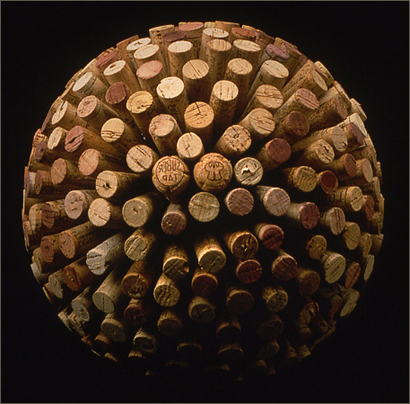
Read more…
The carbon footprint of wine in National Geographic
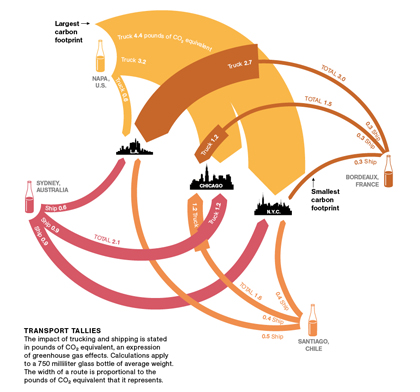
National Geographic has produced an excellent graphic in the May issue about wine’s carbon footprint (unfortunately, no link is yet available but the magazine is arriving in mailboxes and newsstands now). Pablo Paster and I provided the numbers for them based on our joint research on the subject.
We previously discussed the “green line” for wine and how it is more carbon efficient for a New Yorker to raise a glass of Bordeaux rather than a glass of California wine. Well, New Yorkers can now also raise a glass of Australian wine to achieve the same result: holding production method and bottle weight constant, the efficiencies of container shipping from a CO2e standpoint are such that a bottle of wine from Sydney arriving in New York City has a less than a quarter of the carbon emissions as one from California, which had a long journey by less efficient truck. The efficiencies even stretch to Chicago, assuming the bottle went through the Panama Canal to New Jersey and then had the shorter truck journey.
Astute readers will note that this finding was not in our original working paper. This updated version reflects the correction of a typo in one of our source materials (a reader of this site actually tipped us off to that), which, when corrected, made the efficiency of shipping even greater.
Bonny Doon’s labels bare all – Randall Grahm, part I
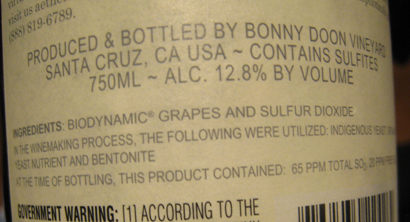
Spotted yesterday at a trade tasting: Bonny Doon’s labels are now baring all and putting a full “ingredient” list. This is not a legal requirement but more comprehensive labeling for wine is a subject that is in play. While more information on labels is a probably good thing, it would be helpful to have some context about some of lesser-known aspects of winemaking. But maybe that’s what the internet is for, researching things like wine ingredient lists. What do you think about more information on wine labels?
I asked Doonmaster Randall Grahm what prompted him to take this extra step. He said his reasoning was twofold. While admitting it was a little bit “pious” on his part, he said that he was doing it in part to encourage the industry to do more with less and to be more natural while “trumpeting our own virtue.” Further, he said that it is kind of an enforced discipline: “if you have to add it to the label, you think twice before doing anything.” He added, “It makes a better wine.”
Stay tuned for more with the Randall Grahm as I ask him about screwcaps and his new project!
In case you can’t read it from the blog-blurry photo of his 2008 Albarino (find this wine), here’s the text after the jump: Read more…
Roll out the barrel box
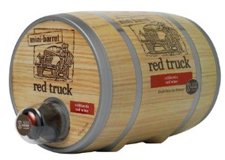 Red Truck, a high volume brand from California, has decided to roll out the barrel. Their new three liter bag-in-barrel wine will appear this month at Sam’s Clubs across the country. Their press release claims that this packaging is “convenient, eye-catching and environmentally-friendly…[and] a terrific wine value.” Let’s check the truthiness of these claims.
Red Truck, a high volume brand from California, has decided to roll out the barrel. Their new three liter bag-in-barrel wine will appear this month at Sam’s Clubs across the country. Their press release claims that this packaging is “convenient, eye-catching and environmentally-friendly…[and] a terrific wine value.” Let’s check the truthiness of these claims.
Convenient? Sure, it probably keeps the wine fresh for a month with the bladder and spigot.
Eye-catching? Yes, it looks better than a box, at least from the photos. Maybe in person it is nasty, plastic-y looking but for now, yes, eye-catching.
Environmentally friendly? [NOTE: because the Red Truck press representative misunderstood my query about the weight of the packaging, this portion has had to be altered.] In my joint research into the carbon footprint of wine, we found that lighter packaging can greatly reduce the overall carbon footprint of wine. This barrel puts 3,000g of wine in 250g of packaging, so it vastly improves the wine-to-packaging ratio over bottles. (The PR person had previously told me the weight of the whole barrel, full of wine, was the weight of the packaging alone. So even though I had to redo this part, she buttered me up by saying that my NYT op-ed had inspired their their 3L package.)
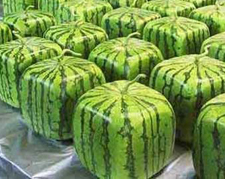 But the cylindrical casing still leaves more dead air in the truck so it’s not quite as efficient as the rectangular box. (That’s why watermelons are square, right?) The packaging is all #5 plastic, which some municipalities may recycle. The plastic bladder is #7.
But the cylindrical casing still leaves more dead air in the truck so it’s not quite as efficient as the rectangular box. (That’s why watermelons are square, right?) The packaging is all #5 plastic, which some municipalities may recycle. The plastic bladder is #7.
Value? At $29.99, it’s the equivalent of $7.50 per bottle. Although it can be found for $6.99 a bottle, many retailers appear to have it for $8.99 a bottle. So, yes, some savings. But you should probably experiment with a bottle of it first to see if you like it.
Nicolas Joly on biodynamics, truth, song, and Mr. Big Muscle
 While gesticulating fervently, Nicolas Joly addressed a packed room yesterday at the Return to Terroir event in New York City today. Although the tasting was going on in the next room, separated only by a thin curtain, the standing-room, rapt audience listened to Joly, a sort of evangelist for Biodynamics who makes wine at the Coulée de Serrant in the Loire (search for Coulée wines).
While gesticulating fervently, Nicolas Joly addressed a packed room yesterday at the Return to Terroir event in New York City today. Although the tasting was going on in the next room, separated only by a thin curtain, the standing-room, rapt audience listened to Joly, a sort of evangelist for Biodynamics who makes wine at the Coulée de Serrant in the Loire (search for Coulée wines).
What follows are some excerpts from his talk. It’s not a verbatim transcript insofar as every word he said is included (I got lost about the relative benefits of having manure from horses, cows, AND pigs, for example). But while he was talking, I was typing his words as he said them. So without further ado, take it away Monsieur Joly:
What is an appellation controllée? Ideally, it is a type of soil and a match of vines. If you have been putting these vines in the right spot, you have an originality.
How much of the concept of the appellation controllée is left? Unfortunately, very little. The so-called modern farming with weed killers destroys the microorganisms of the soil. Read more…
Should a bigger better bottle bill include wine bottle deposits?
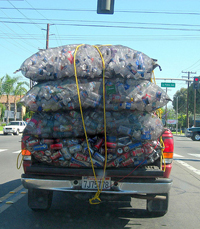 Have you ever tried to return beer bottles for a deposit in New York State? I have and it ain’t pretty. The last time I did it, I brought 12 bottles in to the supermarket and left after much grinding and crashing in the machine with six bottles and a receipt for a 20 cent credit. Woohoo! It made me want to drive to Michigan for their ten cent deposit a la Seinfeld!
Have you ever tried to return beer bottles for a deposit in New York State? I have and it ain’t pretty. The last time I did it, I brought 12 bottles in to the supermarket and left after much grinding and crashing in the machine with six bottles and a receipt for a 20 cent credit. Woohoo! It made me want to drive to Michigan for their ten cent deposit a la Seinfeld!
Bottle or container deposits are a hot topic now. Eleven states require some sort of deposit, mostly on beer and carbonated soft drinks. But former New York Governor Spitzer and now Governor Paterson have now proposed a “bigger better bottle bill,” which would expand the five cent deposit system to single serving sport drinks and water. The goal of this policy proposal is to increase recycling–as well as revenues to the state.
I was not surprised to learn after my experience that there’s a lot of deposit money that is not collected. In fact, it was $100 million last year. But I was astounded to learn that that uncollected deposit money goes to distributors of beer and soda, not the state. Shocking! In the new legislation, these funds would go specifically to New York’s Environmental Protection Fund.
It’s funny that wine bottles have not been included in a bottle bill in New York. They aren’t included in Oregon either, which enacted the first container deposit laws in 1971. But reforms are afoot in Oregon, where many single-serve, noncarbonated beverages now have a deposit as of January 1 of this year. Further, a task force has just recommended adding all beverages except for milk by 2013. HB 2184 proposes changes to the bottle bill based on these recommendations and is scheduled for a hearing on Thursday.
What do you think: should wine bottles also have a deposit? As the program currently stands in New York, I don’t think so. Five cents might have been enough when the program was first enacted but now it would just be another tax, not an incentive to return any bottles. And the redemption process for beer is not very effective since not every store accepts bottles from every brand. Further, wine is mostly consumed at home or restaurants/bars, which tends to lead to high levels of recycling. Unless we all start drinking wine in the park, that is.
Three questions with Christine Saahs of Nikolaihof, Wachau
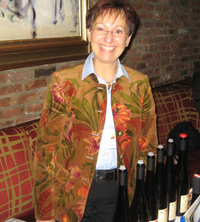 Christine Saahs of Nikolaihof was the first to apply Rudolph Steiner’s philosophy to viticulture, thus cultivating her vines in Austria’s Wachau region biodynamically. The Im Weingebirge Smaragd bottling is always one of my favorite gruner veltliners and indeed the 2006 I tasted had great, rich intensity and a long minerally finish. The 2007 Hefeabzug for half the price offered great zip and zest overlain on a mineral core. Nikolaihof also makes several very good Rieslings. I was happy to have the chance to chat about three things during a busy trade tasting on Tuesday.
Christine Saahs of Nikolaihof was the first to apply Rudolph Steiner’s philosophy to viticulture, thus cultivating her vines in Austria’s Wachau region biodynamically. The Im Weingebirge Smaragd bottling is always one of my favorite gruner veltliners and indeed the 2006 I tasted had great, rich intensity and a long minerally finish. The 2007 Hefeabzug for half the price offered great zip and zest overlain on a mineral core. Nikolaihof also makes several very good Rieslings. I was happy to have the chance to chat about three things during a busy trade tasting on Tuesday.
How was the 2008 vintage for you?
For the biodynamic growers it was fabulous. There was a lot of rain; it rained every day for three months. But it wasn’t often a heavy rain and the leaves were just wet, which caused fungus problems for many growers. But we are so happy with the quality of our wines and harvested our Smaragd in the third week of September, earlier than many others. For us, the vintage was less quantity but great quality.
Describing her Gruner Veltliner “Hefeabzug” (about $25; find this wine):
It’s such a refreshing aperitif. The wine has such energy that customers say they can’t sleep after a glass. It’s much better than anything from the pharmacy–it’s a natural energy drink!
Is Austrian Riesling too high in alcohol? [Hers are 12.5%]
No Austria is one of the best places for Riesling in the world. Rising alcohol is not a problem of global warming; it is a problem of wine journalists who give high scores to high alcohol wines. Customers are always asking me for low alcohol wines because they want to be fresh after a bottle. Have a bottle of 14.5% alcohol wine and you’re dead! Well, not you because you are young, but me, I’d be dead!
As a side note, Christine told me she doesn’t say “cheese” for photos; she says Riesling!



